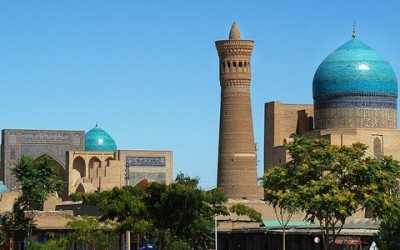The importance of the city in the development of Islamic civilization inspired Edmund Clifford Bosworth, the late Professor of History of medieval Islam[1] to compile the entries already published in the Encyclopedia of Islam in Historic Cities of the Islamic World. Bosworth enumerates the significance of urban life in the development of all civilization, however, he emphasizes that “from the time of the establishment of the amsar, the armed camps of the Arab warriors in places like Iraq and Egypt, Islam has been a religion with a strong urban orientation” (p.1).
The limited space of the Encyclopedia does not allow the contributors to include all results of their studies; therefore, this volume is a more elaborate introduction of the Islamic cities. Moreover, it encompasses the more recent studies during the second half of the 20th century as well as more findings of recent historical developments of cities. Bosworth, as the editor of the volume, has contributed all supplementation (p.2).
Bosworth emphasizes that the cities for inclusion in this volume have personally been chosen (p.2). Considering this point that this volume aims to serve as an encyclopedia for cities in the Islamic world it is expected to include the significant cities of Islamic countries. Among the cities of medieval Iran, the following are examined in this book: Bukhara, Ghazna, Hamadan, Heart, Isfahan, Kabul, Kandahar, Kashghar, Khiva, Kerman, Mashhad, Merv, Nishapur, Qazvin, Ray, Samarqand, Shiraz, Tabriz, Tehran, Yazd. It doesn’t include important port cities of Iran like Mazandaran and Gilan in the north or Siraf, Bushehr, and Bandar Abbas in the south. Furthermore, main cities like Qum which had a critical role in the history of the Islamic world have been ignored.
The entries mostly focus on specific historic periods or concepts; they provide general information about the geographical location, the population of the city its pre-Islamic foundations, as well as its historical development in the cultural and political context.[2] In this context, the analysis of the pre-Islamic roots of cities is an important aspect of this book that distinguishes it from its competitors.
The last section of the book consists of the images of the cities and buildings introduced in articles.
The entries introduce the most crucial urban elements such as market, mosque, and palace. Most of the authors of the volume are historians, therefore, more emphasis is put on the historical context of cities. Despite the wide range of approaches taken by the contributors, the harmonious organization of entries enhances the cohesion throughout the volume. It should provide some theoretical background on the definitions of Islamic cities and their dominant design characteristics, as well as research approaches applied in the whole volume. [3] In general, this book provides a reliable example for more comprehensive studies on the cities in the Islamic world.
Maryam Kamali


